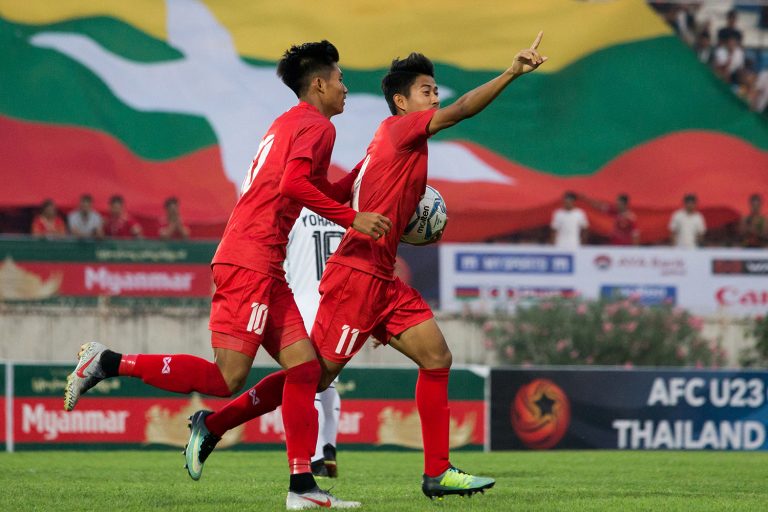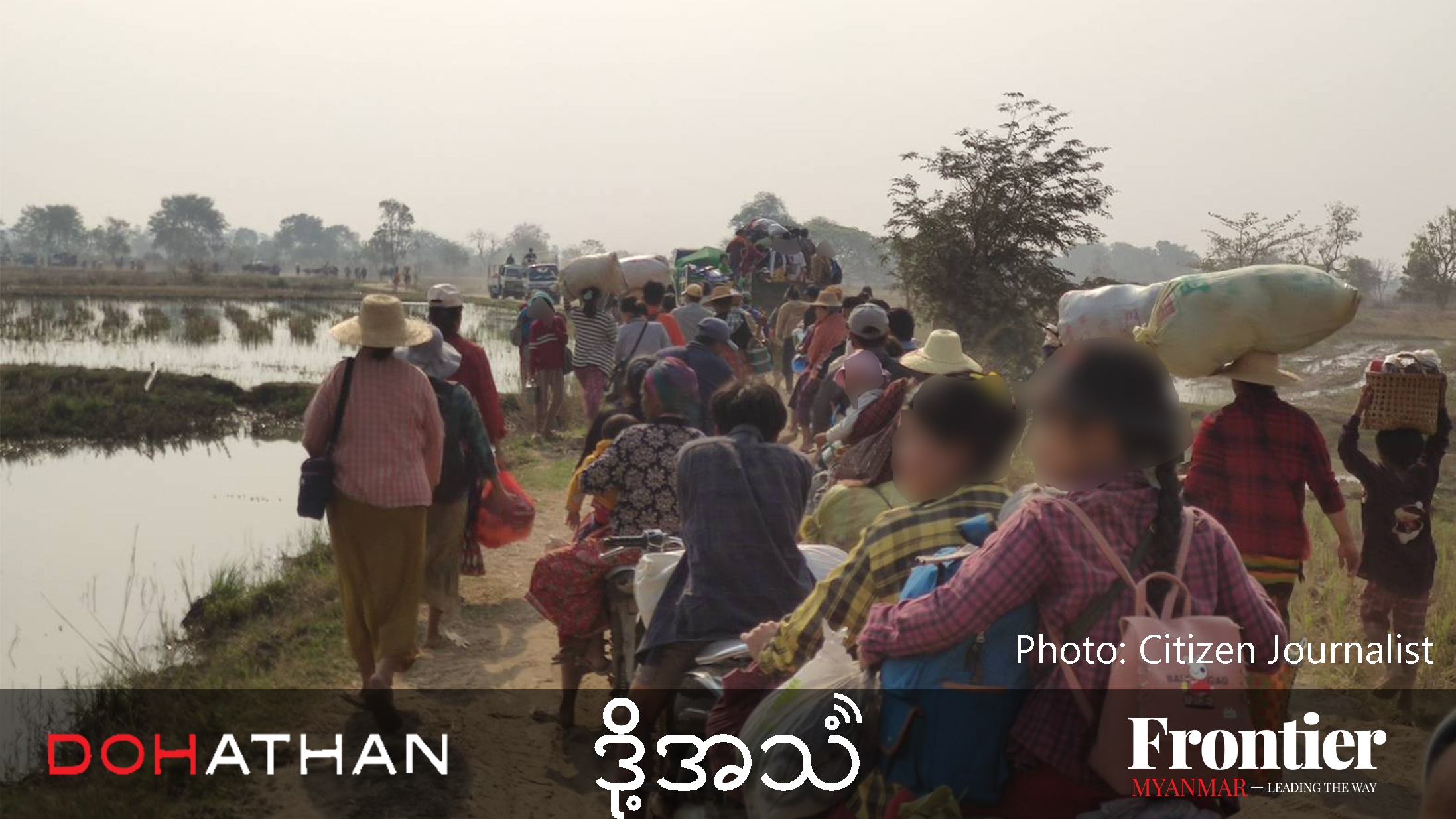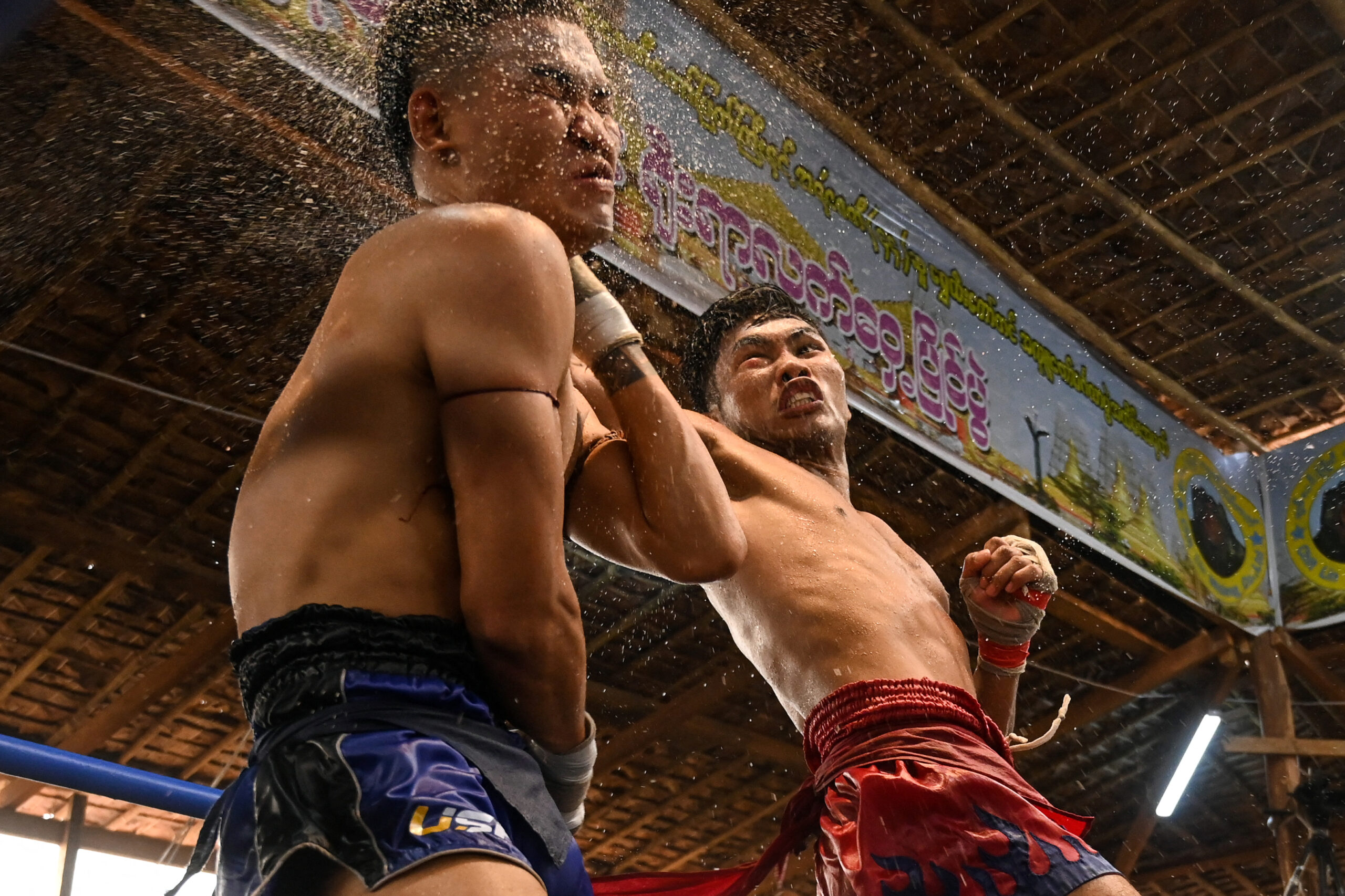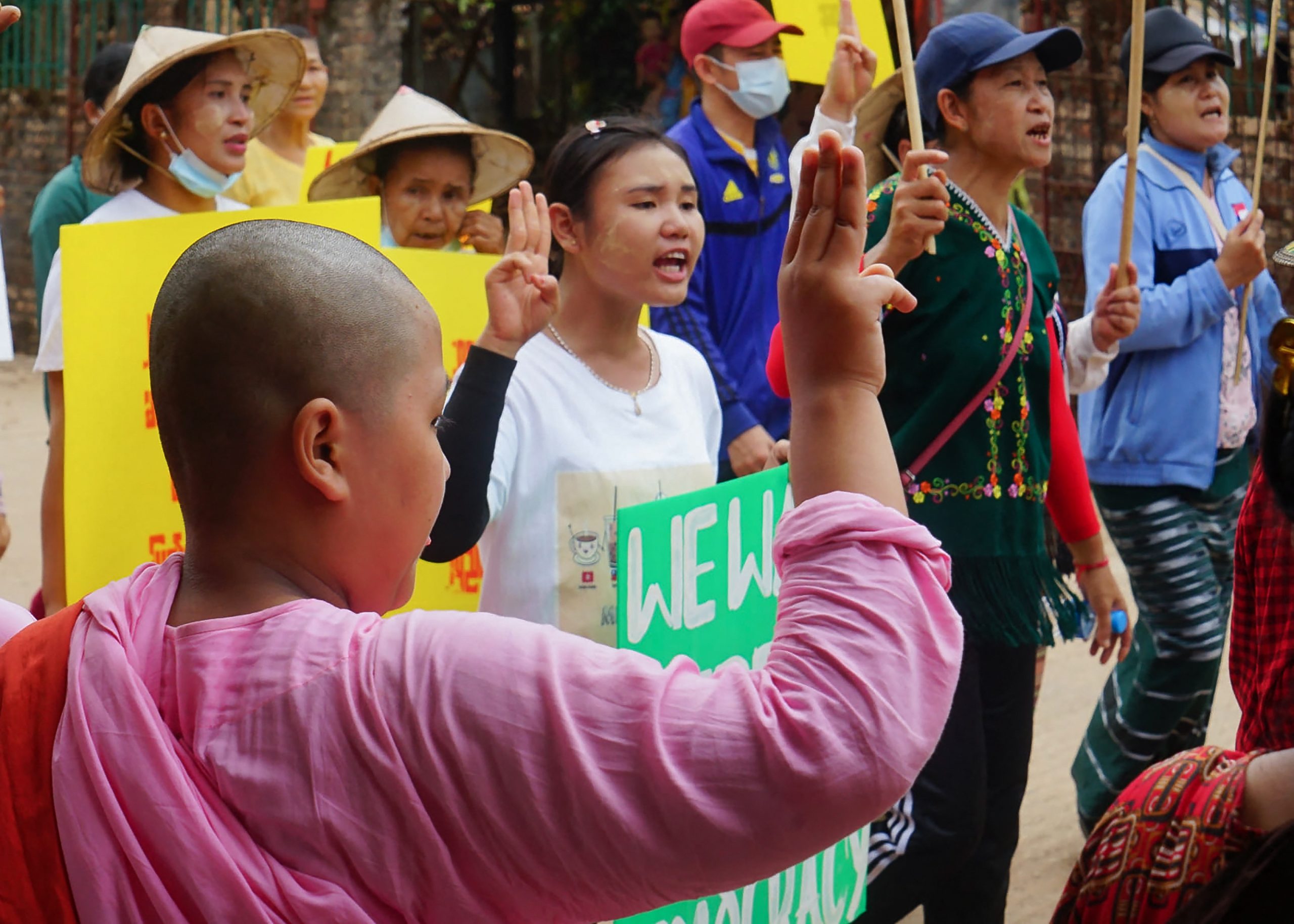By KELLY MACNAMARA | AFP
A young woman practicing Myanmar’s homespun martial art Lethwei at a gym in Yangon. (Ye Aung Thu / AFP)
Moe Pwint Oo shoots the grimy punchbag a steely glare before slamming her fist into it, striking a blow for equality as she practises Myanmar’s homespun martial art of Lethwei — a sport that encourages head-butting and grants victory by knockout only.
The petite medical science student is among a growing number of women taking up Lethwei kickboxing, building up a sweat at a gritty Yangon gym where some of the country’s best fighters train, alongside expatriates and celebrities.
“I think Lethwei is becoming really popular here because I see a lot of my friends here as well. But I am here to box not to socialise,” said Moe Pwint Oo, as a woman from Japan practised spin kicks in a makeshift ring behind her.
Lethwei fighters say their sport is the toughest of Southeast Asia’s kickboxing family, leaving Thailand’s more famous Muay Thai in the blood-flecked dust because of its disdain for gloves and use of skull-cracking head-butts.
To win a Lethwei fight you must batter your opponent unconscious or to the point of surrender. If no one gets knocked out in five three-minute rounds, the match ends in a draw.
Support more independent journalism like this. Sign up to be a Frontier member.
It is perhaps little wonder that few women traditionally enter the ring in Myanmar, where gender norms favour demure damsels over fearsome fighters.
But that has begun to change in recent years as gender roles shift.
Opposition leader Aung San Suu Kyi is the most famous of a growing number of female politicians, and the business community includes many successful women.
The flash of a naked female knee does not have quite the scandalising power it once did, with short skirts and shorts an increasingly common sight on city streets – although most women keep their hemlines at ankle level.
About half of the regulars at the Thut Ti (Courage) gym are women, attracted to the intensity of the fitness level and authenticity of skill required in Lethwei.
“It’s really nice to have somebody like you here, because it’s like a guys’ place,” said Moe Pwint Oo, gesturing at knuckles strapped with red surgical tape.
Having spent years outside her homeland, she “wanted to do something very traditional, very Burmese” in her summer break from Aberdeen University in Scotland.
Bare-knuckle combat

Medical science student Moe Pwint Oo, left, training at a gym in Yangon. (Ye Aung Thu / AFP)
Lethwei has an ancient history.
Carvings in the temples at Bagan in central Myanmar appear to show pairs of men locked in combat, suggesting the sport is more than 1,000 years old, said Win Zin Oo, founder of the Thut Ti gym and a former vice president of the Myanmar Lethwei Federation.
In modern times it was kept alive in Kayin and Mon states, where kickboxing bouts are held to mark everything from monks’ funerals to New Year festivities.
Spectators in front row seats are close enough to hear bones shatter and be sporadically showered with blood, sweat and spittle.
But the tournaments are seen as family affairs and many include bouts with boys as young as 10.
Win Zin Oo admitted that the bare-knuckle fighting style was “robust”.
“All components of the body can be used as weapons; punches, knee strikes, elbow beats, head butts, you can throw (your opponent)… If you want to compete in the real Lethwei ring as a professional you must be really tough,” he told AFP.
He normally advises enthusiasts not to fight.
For those who do, endurance is as important as aggression.
Lethwei boxer Tha Pyay Nyo, 25, who has a formidable record of more than 150 matches and only one defeat, gave up farming in his native Kayin State to take up the sport professionally because “I might be famous one day”.
He recently branched out into mixed martial arts, or “cage fighting”, competing in his debut international tournament as part of the first ONE Championship event in Myanmar.
The televised tournament was a chance to showcase some of the fighting spirit of a national sport that has languished in the shadow of its better-known Thai cousin.
“I want the world to know our courage through Myanmar traditional boxing,” he told AFP before the match.
‘Very empowering’
Daw Na Aung, right, practicing Lethwei at a gym in Yangon. (Ye Aung Thu)
Win Zin Oo hopes Myanmar will emulate the success of its Thai neighbours in promoting its own kickboxing brand.
His gym is increasingly popular and about half of those who train at it are women, including models, singers and actresses.
He said there was some “sensitivity” about how women should be treated, but insisted the gym did not discriminate.
“Some (women) students they are really really good, even in terms of decisiveness I think. So it’s a little unfair (to say) ‘oh women are weak, men are strong’,” he said.
When she returns to Scotland, Moe Pwint Oo will have to make do with Muay Thai, in which head-butts are banned and protective clothing is worn, to keep training.
She said she was hooked on Myanmar’s more fearsome version.
“It makes you fit, it’s traditional and then, you know, it’s very empowering, especially for women,” she said.







